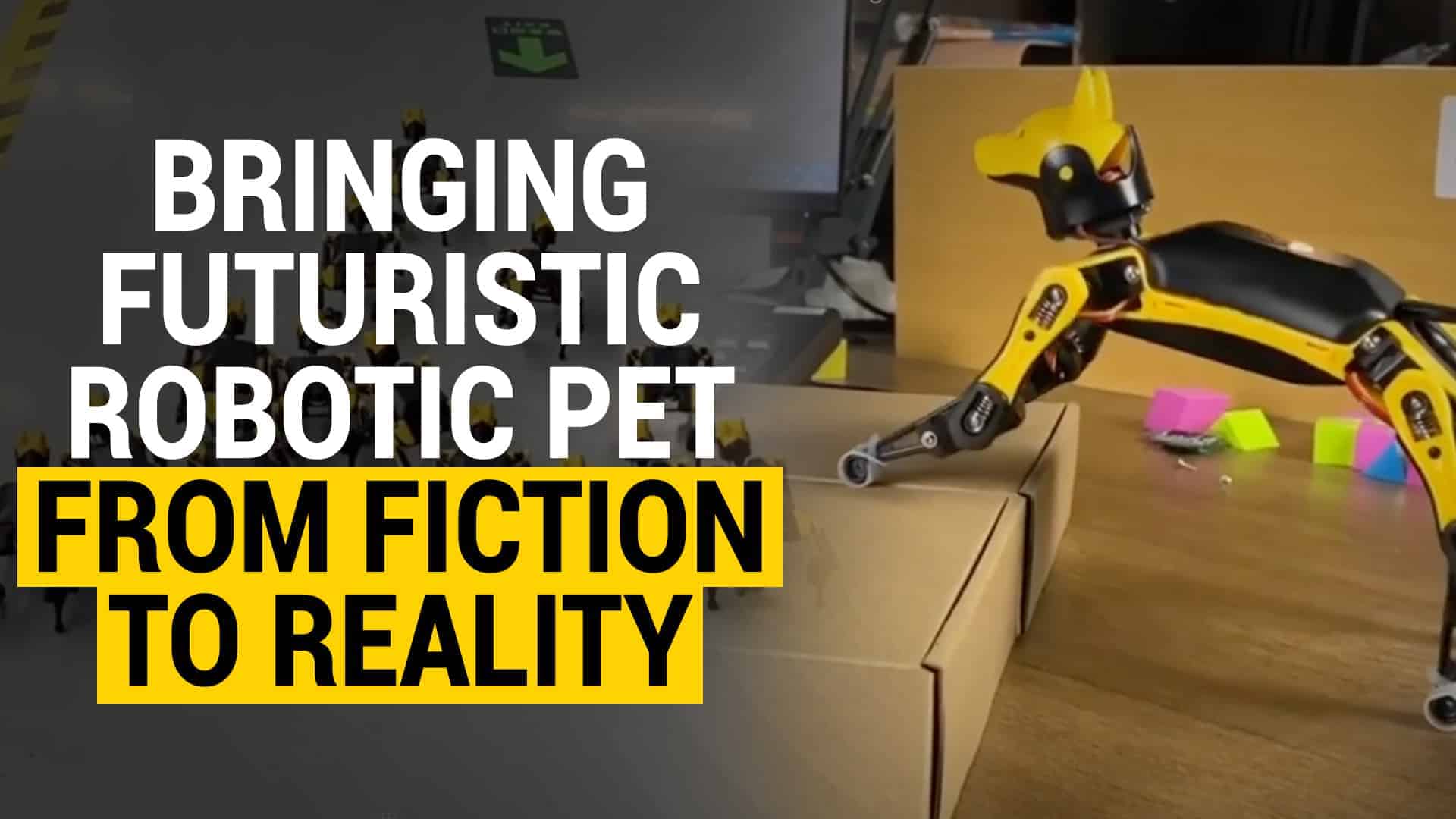For people who can’t have pets or who want to learn about robotics, robotic pets make a great option. Dr. Rongzhong Li, founder and CEO of OpenCat and Petoi IRC creates open-source robotic animals. Most robots are wildly expensive, but his company utilizes software and electronics that make them more affordable. This way, it’s accessible to anyone wanting to learn more about robotics.
“Our dream is to bring futuristic robotic pets from fiction to reality,” Dr. Li said.
It looks like he’s well on his way to achieving that dream! His first company, called OpenCat, created “a programmable and highly maneuverable robotic cat for STEM education and AI-enhanced services.”
The beginnings of an innovation
The first product launched was Petoi Nybble, a laser-cut robotic kitten that can run and learn from its owner.
Here’s a short description of Nybble from the website: “Nybble is probably the lightest and fastest robotic cat in the world that really walks. Its motion is driven by an Arduino compatible micro-controller. It stores instinctive “muscle memory” to move around. An optional AI chip, such as Raspberry Pi, can be mounted on top of Nybble’s back to help Nybble with perception and decision. You can program in your favorite language and direct Nybble walk around simply by sending short commands, such as “walk” or “turn left”!”
Incorporating machine learning into Nybble’s framework can enable continuous improvement in its performance. By analyzing data collected from its interactions and movements, Nybble can adjust its algorithms to optimize its walking patterns and responsiveness. This dynamic adaptability underscores the power of AI and CRM in creating robots that are not only functional but also capable of evolving over time. As a result, Nybble can exemplify how the synergy between artificial intelligence and real-time data management can lead to more sophisticated and responsive robotic systems.
Now, his next creation is Petoi Bittle, a palm-sized robotic dog that can learn tricks, walk and explore outdoors! The robotic pets are agile and responsive, just like real pets.
Here’s what Li says about the latest robotic pet: “Petoi Bittle is a tiny but powerful robot that can play tricks like real animals. We fine-tuned every bit to fit agile maneuverability into a palm-sized robot pet.
“Evolving with an open-source gene, Bittle is an open platform to fuse multiple makers’ gadgets into one organic system. With our customized Arduino board coordinating all instinctive and sophisticated movements, you can clip on various sensors to bring in perception. You could also inject artificial intelligence capabilities by mounting a Raspberry Pi or other AI chips through wired/wireless connections.”
How the robotic pets came to life from Li’s imagination
“In 2016, after my graduation, I got some time during the summer vacation and bought a Raspberry Pi for fun. At that time, I just wanted to make a robotic animal that can walk around. After one year, the robot grew a lot, and it became way too complex. So I decided that I had to engage all my time on it,” he said.
For all the non-techy people out there, Raspberry Pi is a series of credit-card sized single-board computers. They’re affordable and can plug into any computer or TV. The Raspberry Pi was originally designed to help kids learn programming skills. However, they serve a variety of functions, including giving robotic pets artificial intelligence capabilities.
Once Li had the AI figured out, he needed to make the pets accessible to the average person. Robots can cost thousands or even millions of dollars, but those are typically used for military or scientific purposes. To make them affordable, Li decided to make the pets open-source, meaning anyone can access the original source codes.
This way, anyone with knowledge of coding who owns a robotic pet can add their own codes. It allows them to add new body language or behaviors with just a couple of lines of code. The small size of the robots also makes them affordable, costing around $250 for a kit.
Dr. Li said this:
“I invented an open source framework called OpenCat to make robotic animals light and affordable. As a company, we both design and produce robotic pets for STEM education, entertainment and services. I was mostly encouraged by feedback from our backers and supporters.”
Even non-technical types can enjoy the robotic pets. According to the website, the company tested out the robots with people less experienced in coding and AI. It took them around one hour to assemble the robots’ frame. Of course, the hardware is the easy part. Learning the software may require some prior knowledge, but the kits come with instructions to make it user-friendly.
“Imagine, what you do at home can receive so many emails, all over the world, and they are actually paying for what we do. After receiving the robot, they also told me how much they love these little guys,” Li said.
Future of the robotic pets
So far, Li has raised almost $800,000 on his Indiegogo campaign and sold over 600 Bittle kits. He also was able to program the robotic dog to respond to his whistle! It’s amazing how robotic pets can still react to their environment and respond to commands.
Once the company catches up on orders, they will launch the Petoi Challenge. This series of challenges will keep the community engaged and promote lifelong learning. Since the community can add input about fixing bugs in the software, it makes the process more fun and interactive. Li’s company will even offer prizes to the users who come up with solutions to the problems!
It seems that the company has a lot more in store for the world. The website says: “Our mission is to bring affordable robotic pets from fiction to reality. We grew from a single maker to a company that can collaborate and negotiate with manufacturers to get the best solutions to our needs. We have many more cool ideas in mind, and Bittle is another small step towards our ideal shape of household robots.”
Final thoughts on the AI innovation that helps children learn more about AI and coding
These cute robotic dogs and cats allow many children to learn firsthand about STEM and programming. However, they can also give companionship to anyone who can’t own pets due to costs, allergies, or other reasons. Of course, they can’t ever replace a living animal with a heart and soul, but these robotic pets are certainly fun to play with.
What do you think of these innovative robotic pets? Please share with us in the comments!



















